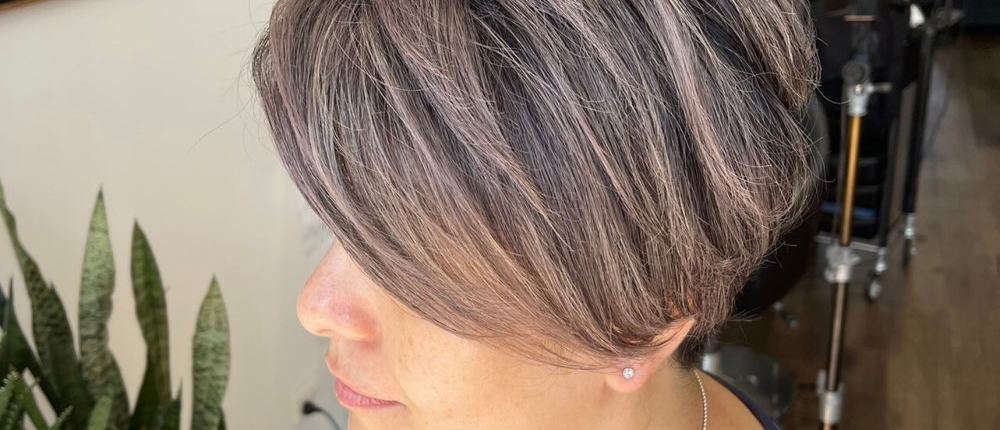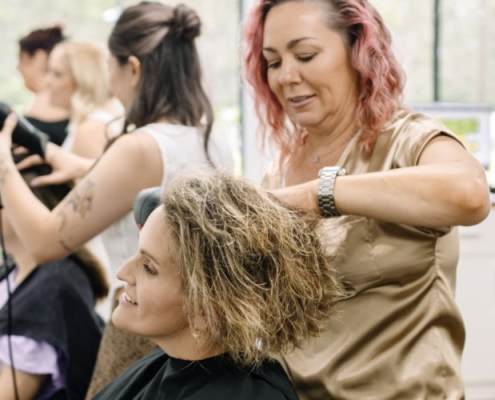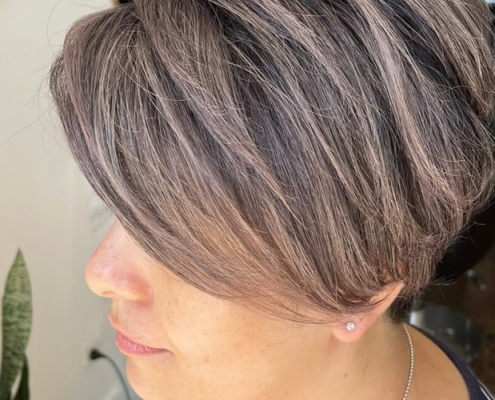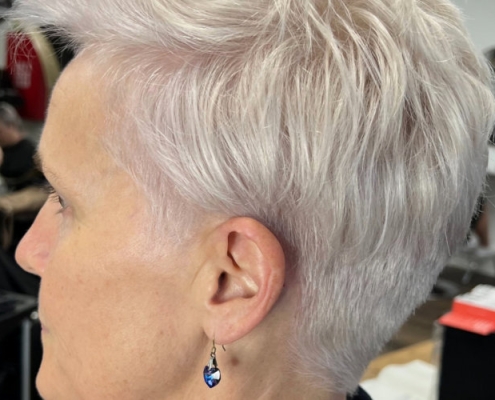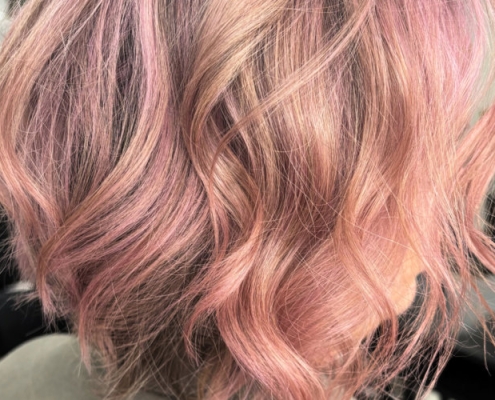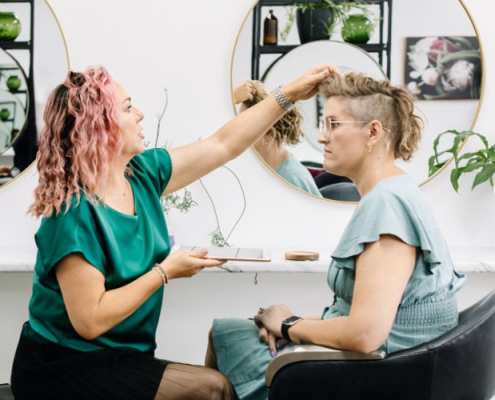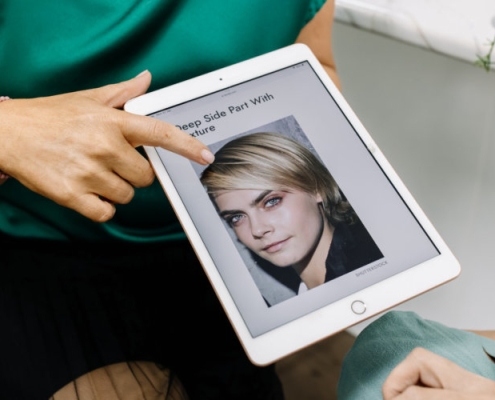Short Hair and Colour: Best Shades for a Bold Look
Short hair is the perfect canvas for bold, vibrant, and stylish colours. Without the weight of long strands, colour appears richer, more intense, and easier to maintain. Whether you want a subtle refresh, a trendy pastel hue, or a striking dramatic shade, the right colour can enhance your features, complement your short hairstyle, and boost your confidence.
If you’re considering a short cut but aren’t sure which style will best showcase your chosen colour, check out Best Short Hairstyles for Different Face Shapes for inspiration.
How to Choose the Best Colour for Short Hair
When selecting a hair colour for your short cut, consider the following factors:
- Skin tone: Warm tones suit rich, golden hues, while cool tones complement icy blondes, blues, and purples.
- Hair texture: Highlights and balayage enhance texture, while bold solid colours work well for sleek styles.
- Maintenance: Bright shades may require frequent touch-ups, while natural tones grow out more seamlessly.
Best Hair Colours for Short Hair
1. Classic Blonde Shades
Blonde hair can instantly brighten your look and add dimension to a short hairstyle. Depending on your undertones, you can choose from:
- Platinum Blonde: A striking, icy shade that pairs beautifully with pixie cuts and edgy bobs.
- Honey Blonde: A warm, golden hue that adds depth and richness.
- Ash Blonde: A cooler blonde perfect for a sophisticated, modern style.
For styling tips on short haircuts that work well with blonde tones, read How to Style Short Hair: Tips for Every Hair Type.
2. Bold and Vibrant Colours
If you’re feeling adventurous, bold colours can make a dramatic statement. Popular choices include:
- Fiery Red: Shades like copper, auburn, or deep burgundy add intensity and warmth.
- Electric Blue: A daring, high-impact choice that stands out beautifully on short hair.
- Neon Pink: A playful, youthful shade that works well on pixie cuts and bobs.
- Emerald Green: A deep, jewel-toned shade that creates a unique and stylish look.
If you’re considering a dramatic colour transformation but worry about growing it out, check out Growing Out Short Hair: How to Avoid the Awkward Phase.
3. Soft and Pastel Tones
Pastel shades are trendy and give short hair an ethereal, whimsical touch. Some popular choices include:
- Lavender: A soft, feminine colour that pairs beautifully with pixie cuts.
- Rose Gold: A subtle mix of pink and gold that flatters warm skin tones.
- Mint Green: A fresh, modern choice for those who love unique, playful hues.
4. Natural and Low-Maintenance Shades
If you prefer a more subtle change, natural hues with dimension are a great choice:
- Chocolate Brown: A deep, rich shade that adds warmth and elegance.
- Caramel Balayage: A mix of warm brown and golden highlights for a sun-kissed effect.
- Salt and Pepper: A stylish way to embrace natural grey tones while maintaining a chic look.
If you’re wondering whether short hair can still look feminine with more natural shades, read Can Short Hair Be Feminine? Debunking Common Myths.
Best Colour Techniques for Short Hair
The right colouring technique can enhance your short hairstyle and add depth to your look:
- All-over colour: A single shade for a sleek, uniform look.
- Balayage: Hand-painted highlights that add dimension and movement.
- Ombre: A gradual colour transition from dark roots to lighter ends.
- Highlights: Strategic placement of lighter shades to brighten the face.
- Underlights: A hidden pop of colour underneath for a unique surprise effect.
Maintaining Colour on Short Hair
Once you’ve achieved your ideal hair colour, the next step is proper maintenance to ensure it stays vibrant, healthy, and long-lasting. Short hair requires just as much care as longer hair—if not more—because colour can fade faster due to frequent trims, heat styling, and exposure to environmental factors.
Follow these essential tips to preserve your colour, prevent damage, and keep your short hair looking fresh and stylish.
1. Use a Colour-Safe Shampoo
Using the right shampoo is crucial for maintaining colour vibrancy. Many regular shampoos contain sulfates and harsh detergents, which strip away natural oils and cause colour to fade quickly.
What to Look For:
- Sulfate-free formulas: Gentle cleansers preserve colour and prevent excessive dryness.
- Shampoos with UV protection: These shield hair from sun damage, which can cause colour fading.
- Toning shampoos: If you have blonde, silver, or cool-toned hair, use purple or blue shampoo once a week to counteract brassiness.
Best Practices:
- Wash your hair with lukewarm or cool water to seal the cuticle and lock in colour.
- Shampoo no more than 2-3 times a week to prevent fading.
- Use a dry shampoo in between washes to keep your hair fresh.
2. Deep Condition Regularly
Colour-treated hair tends to become dry and brittle over time. Deep conditioning is essential to restore moisture, strengthen strands, and enhance colour longevity.
What to Look For:
- Hydrating masks with keratin and argan oil: These help repair colour-treated hair and reduce breakage.
- Protein-infused treatments: Strengthen and protect hair from environmental stressors.
- Lightweight formulas: Short hair can feel weighed down, so choose masks that nourish without making hair greasy.
Best Practices:
- Use a deep conditioning treatment once a week to maintain softness.
- Apply from mid-length to ends (avoid the roots to prevent greasiness).
- For extra hydration, leave the mask on for 15-20 minutes under a shower cap before rinsing.
3. Protect Against Heat Damage
Frequent heat styling can fade colour quickly and weaken short hair, leading to dryness and split ends. Always use heat protection before styling.
What to Look For:
- Lightweight heat protectants: Spray formulas work best for short hair without weighing it down.
- Silicone-based protectants: These create a barrier that shields hair from temperatures up to 450°F (230°C).
Best Practices:
- Apply a heat protectant spray evenly before using blow dryers, straighteners, or curling irons.
- Use medium heat settings instead of high heat to prevent colour oxidation.
- Opt for ceramic or tourmaline tools, which distribute heat evenly and minimize damage.
4. Minimise Sun Exposure
UV rays are one of the biggest culprits of colour fading. Sun exposure can break down hair pigments, making your colour look dull or brassy.
What to Look For:
- UV-protecting hair sprays: These form a protective shield over hair strands.
- Hats or scarves: Stylish accessories that help shield your hair from sun damage.
Best Practices:
- Apply a leave-in conditioner with UV protection before spending time outdoors.
- Wear a wide-brimmed hat when in direct sunlight for extended periods.
- If you swim in chlorinated pools, rinse your hair immediately after to remove chemicals that can strip colour.
5. Touch Up Roots as Needed
Since short hair is trimmed more often than long hair, roots can grow out quickly, affecting the overall look. Keeping up with touch-ups ensures your colour stays fresh and polished.
What to Look For:
- Root touch-up sprays: Temporary colour solutions that blend with your natural shade.
- Salon gloss treatments: These refresh colour and add shine between colour sessions.
Best Practices:
- Schedule professional colour touch-ups every 4-6 weeks to maintain vibrancy.
- Use a semi-permanent gloss or toner between appointments to refresh colour.
- If you prefer at-home maintenance, use a root touch-up kit designed for short hair.
Common Colour Issues and How to Fix Them

Final Thoughts
With the right care, your short, coloured hair will remain radiant, fresh, and stylish every day. By following these tips and using the best products, you can maintain your hair colour and keep your short style looking vibrant.

